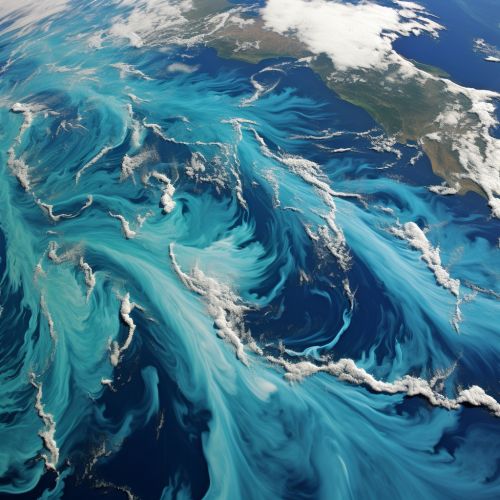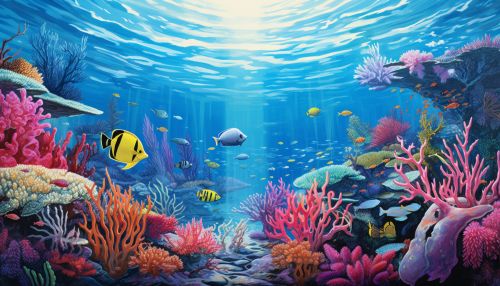The Science of Oceanic Conveyor Belt and Its Impact
Introduction
The oceanic conveyor belt, also known as the thermohaline circulation, is a large-scale oceanic current that is driven by global density gradients created by surface heat and freshwater fluxes. This phenomenon is a key component of the Earth's climate system and plays a significant role in distributing heat around the planet.


Mechanics of the Oceanic Conveyor Belt
The oceanic conveyor belt is a complex system of global ocean currents, driven by the different densities of ocean water. The density of ocean water is affected by temperature (thermo) and salinity (haline), hence the term 'thermohaline circulation'. When water in the ocean gets heated up near the equator, it expands and becomes less dense, causing it to rise. This warm water then travels towards the poles, where it cools, contracts, and becomes denser, sinking to the bottom. This sinking of cold, dense water drives the deep ocean currents, while the rising of warm, less dense water drives the surface currents. This continuous cycle of rising and sinking water creates a global conveyor belt of ocean currents.


Role in Climate Regulation
The oceanic conveyor belt plays a crucial role in regulating the Earth's climate. By transporting warm water from the equator towards the poles and returning cold water back towards the equator, it helps to distribute heat around the planet. This heat distribution is critical in maintaining the Earth's temperature balance and influencing weather patterns. For example, the Gulf Stream, a part of the oceanic conveyor belt, brings warm water from the Gulf of Mexico to the North Atlantic, giving Western Europe its relatively mild climate.


Impact on Marine Life
The oceanic conveyor belt also has a significant impact on marine life. The movement of water in the conveyor belt helps to mix nutrients throughout the ocean, providing food for marine organisms. In areas where cold, nutrient-rich water rises to the surface (a process known as upwelling), there is often a high concentration of marine life. On the other hand, areas where warm water is sinking can be nutrient-poor and relatively devoid of life.


Potential Impact of Climate Change
Climate change could potentially have a significant impact on the oceanic conveyor belt. Increased temperatures and melting polar ice could alter the density of ocean water, disrupting the thermohaline circulation. Some climate models suggest that this could slow down or even stop the conveyor belt, which could have dramatic effects on global climate and marine life. However, this is still a topic of ongoing research, and the full impact of climate change on the oceanic conveyor belt is not yet fully understood.


